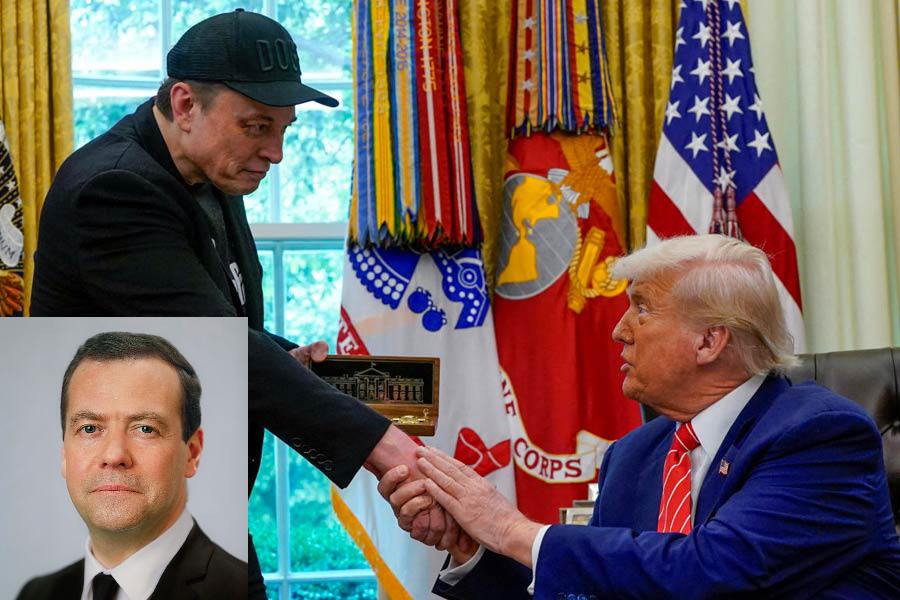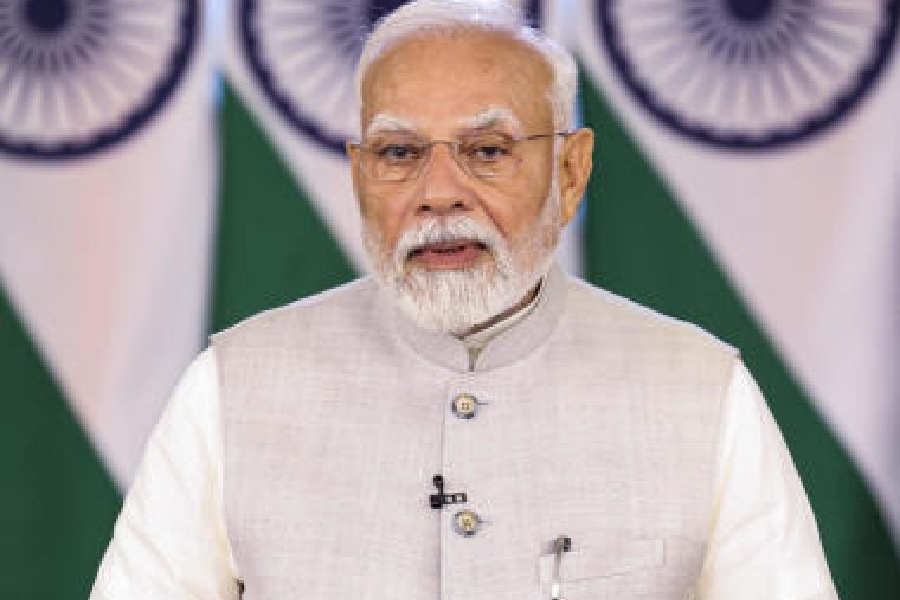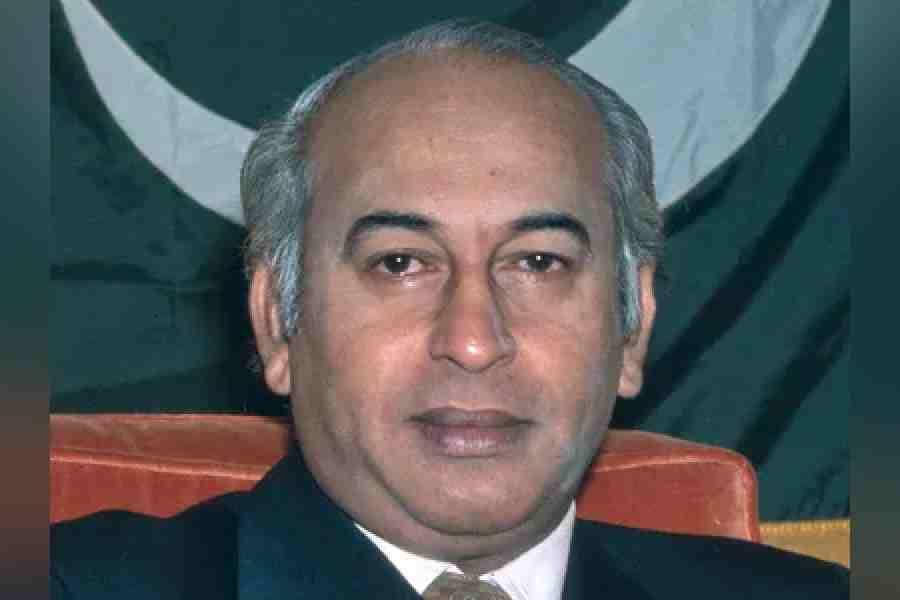 |
| Buddhist monks at a protest march in Yangon on Tuesday. (AFP) |
Yangon, Sept. 25 (Reuters): Myanmar’s junta imposed a dusk-to-dawn curfew in the country’s two main cities today after pouring security forces into Yangon to try to end the biggest protests against military rule in nearly 20 years.
Troops and police armed with rifles had surrounded the Sule Pagoda in Yangon, the focus of two days of mass demonstrations led by thousands of maroon-robed monks.
In another possible sign of a looming clash, a well-placed source said detained democracy leader Aung San Suu Kyi had been moved to the notorious Insein prison on Sunday, a day after she appeared in front of her house to greet marching monks.
Loudspeaker announcements in the former capital, Yangon, and the second city of Mandalay said the curfew would run from 9 pm to 5 am local time, witnesses said.
The announcements also said both cities would be under direct control of the local military commander for 60 days.
Some analysts said the junta was caught off guard by the speed with which sporadic marches against a sharp hike in fuel prices in mid-August had mushroomed into mass demonstrations against 45 years of military rule in the southeast Asian country formerly known as Burma.
As the international community urged the generals to avoid a repeat of a bloody crackdown on protests in 1988 and the US announced fresh sanctions against the junta, the UN human rights investigator for Myanmar said he feared “very severe repression”.
The US will tighten economic sanctions on the leaders of the regime,” he said. “We will impose an expanded visa ban on those responsible for the most egregious violations of human rights.”
This evening, security forces moved in on the Sule Pagoda after hours of peaceful protest by tens of thousands of people who turned up despite the junta’s threat to use force.
The area around the pagoda, which includes City Hall, was the scene of the worst bloodshed during a crackdown on nationwide pro-democracy protests in 1988 in which 3,000 people are thought to have been killed.
Today had echoed with reminders of one of the darkest days of Myanmar’s modern history. Vehicles with loudspeakers toured Yangon, blaring threats of action under a law allowing troops to break up illegal protests. People came in huge numbers anyway and, in Taunggok, a coastal city 400 km to the northwest, witnesses said about 40,000 monks and civilians took to the streets.
Protesters were led in Yangon by 10,000 monks chanting “democracy, democracy” and, in a gesture of defiance, some waved the bright red “fighting peacock” flag, emblem of the student unions that spearheaded the 1988 uprising.
The streets were lined with people clapping and cheering as the column of monks stretched several blocks on their march from the Shwedagon Pagoda, the nation’s holiest shrine. British ambassador Mark Canning said two of the junta’s ministers had assured him the protests “would be dealt with in a ‘correct’ fashion, whatever that means.”










